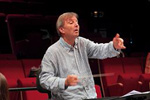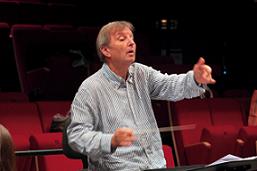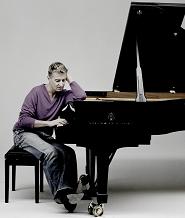What a change! Since that back-to-school concert where maestro Philippe Bender and the Nice Philharmonic Orchestra, in a “Mexican Stand off” fashion, faced each other without connecting, a lot of water—and presumably a lot of collaborative work—has flowed under the bridges. The result: an excellent quality concert given on Friday, October 16, 2009, at the Nice Opera House featuring Richard Strauss’s “Till Eulenspiegels lustige Streiche” op. 28, Franz Liszt’s Piano Concerto No. 2 in A major, and Johannes Brahms’s Symphony No. 1 in C minor, op. 68.
Despite the doubts lingering in the minds of some musicians of the Nice phalanx—but can one truly understand the evolution of a cyclone when inside it?—one had to acknowledge the fortunate consequence of the numerous partial rehearsals. These have allowed for a more enriched relationship between the orchestra and its conductor. Unlike the previous concert, the conductor did not “lose touch” during his performance. Progress is thus evident from the first measures of Richard Strauss’s symphonic poem: the maestro clearly invests the orchestral space where no group of instrumentalists is left orphaned. With flexibility and elasticity, his conducting allows great freedom for individual interpretations. This freedom has, in a way, become the personal trademark of Philippe Bender, even at the risk of disconcerting some musicians used to the tighter bonds with the previous conductor.
In Franz Liszt’s Piano Concerto No. 2 in A major, the pianistic inspiration of the famous virtuoso Jean-Yves Thibaudet does not confine him solely to a personal performance, which already captivates with its perfect balance where precise fingerwork does not, on the contrary, detract from the delicate subtlety of the sound: one feels him moved by this music, transcended by the melody, transforming into a mystical entity, like a figure of Saint Sebastian pierced at each measure of a fully embodied score. This results in a sublime duo, very impressive in intensity, with the cello solo by Zella Terry. Acclaimed after his performance, Jean-Yves Thibaudet had no choice but to offer an encore to the enthusiastic audience: Brahms’s Intermezzo op. 118, intended to facilitate the transition to the second part of the evening, Symphony No. 1 in C minor, op. 68, by Johannes Brahms.
One would be hard-pressed, listening to this last piece, not to see the effects of an in-depth collaboration between the conductor and the Nice Philharmonic Orchestra: precise direction allowing for harmonious development between the lyrical, paroxysmal flights of the strings and the solitary escapades of the first violin by Vera Novakova. Nor can Philippe Bender be criticized for his meticulous yet pleasant respect for the pastoral lightness of the IIIrd movement. Notable before the final acceleration of the Adagio is the touching echo of a melody emanating from the flute played by Isabelle Demourioux.
Amused and surprised comments from some instrumentalists during the hearty applause intended for the orchestra and its conductor: “it happened.” Yes, indeed, something “happened.” Simply the shared pleasure of music.




